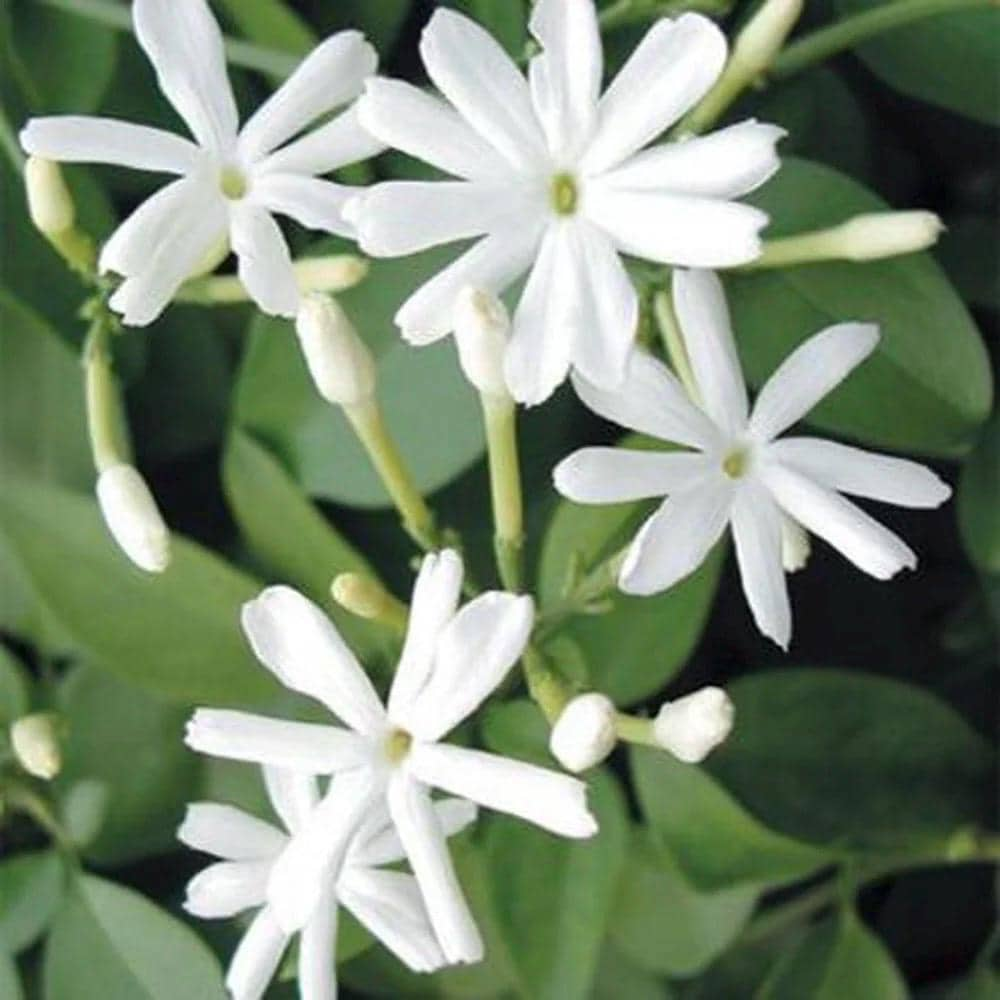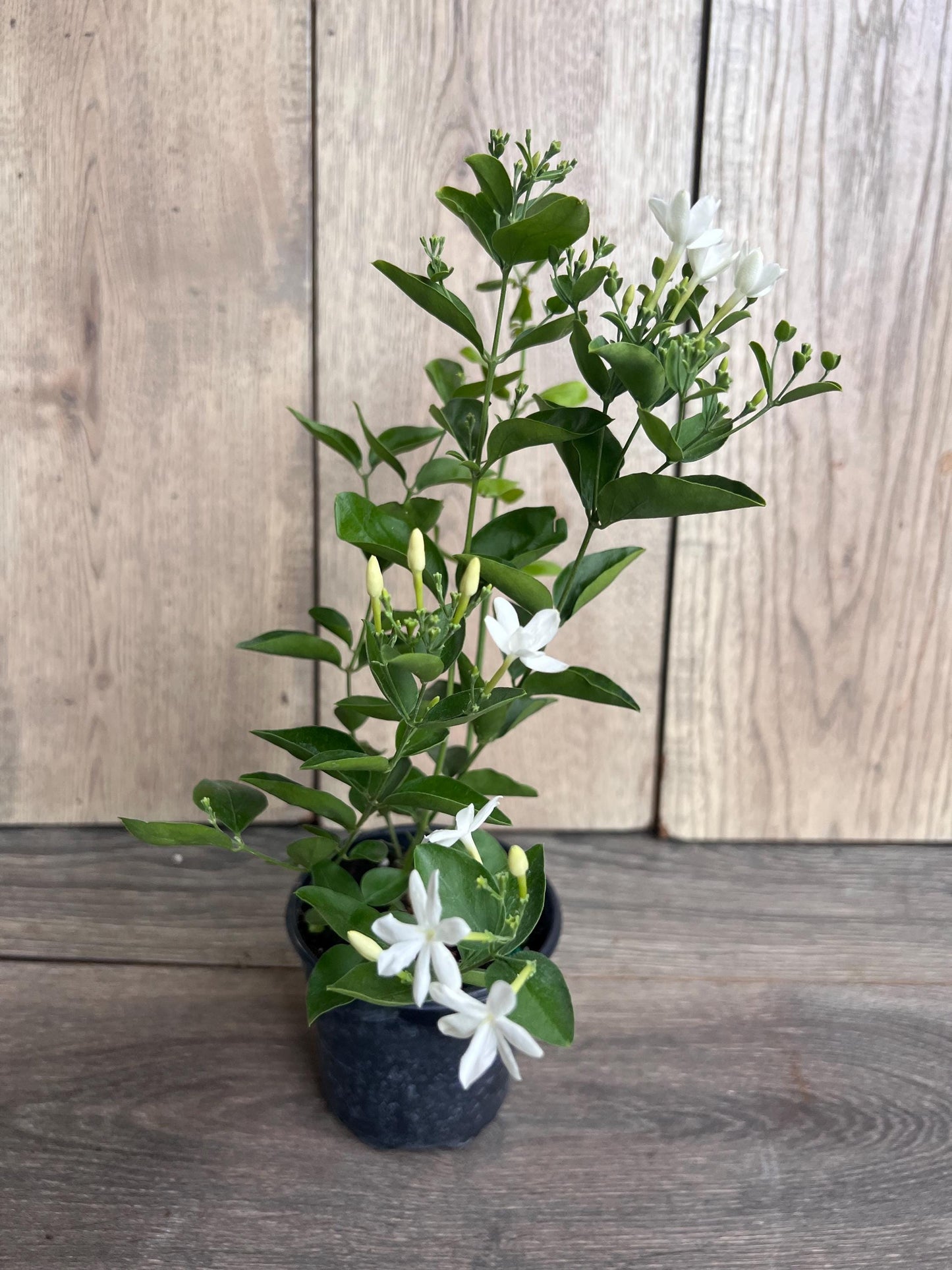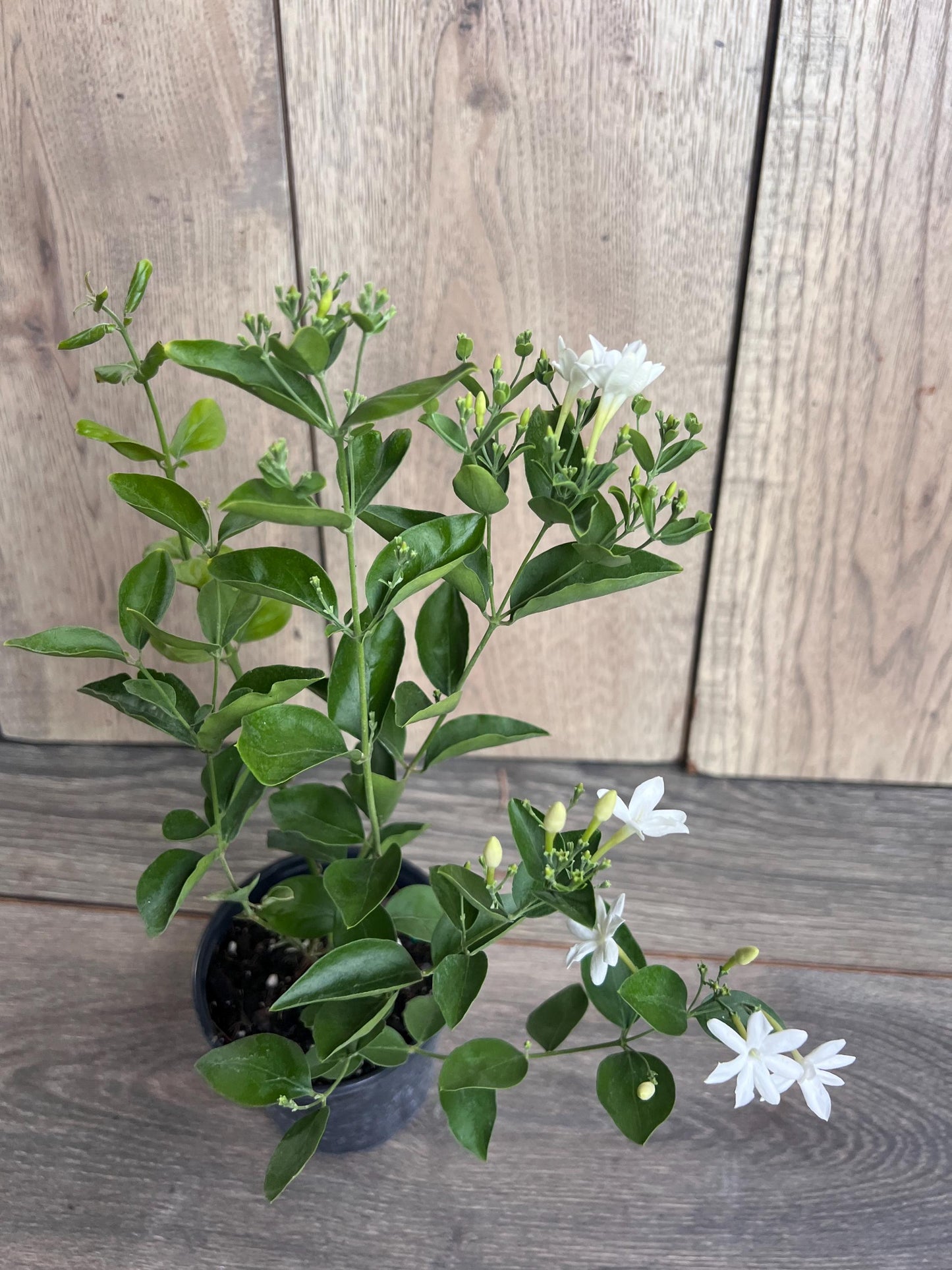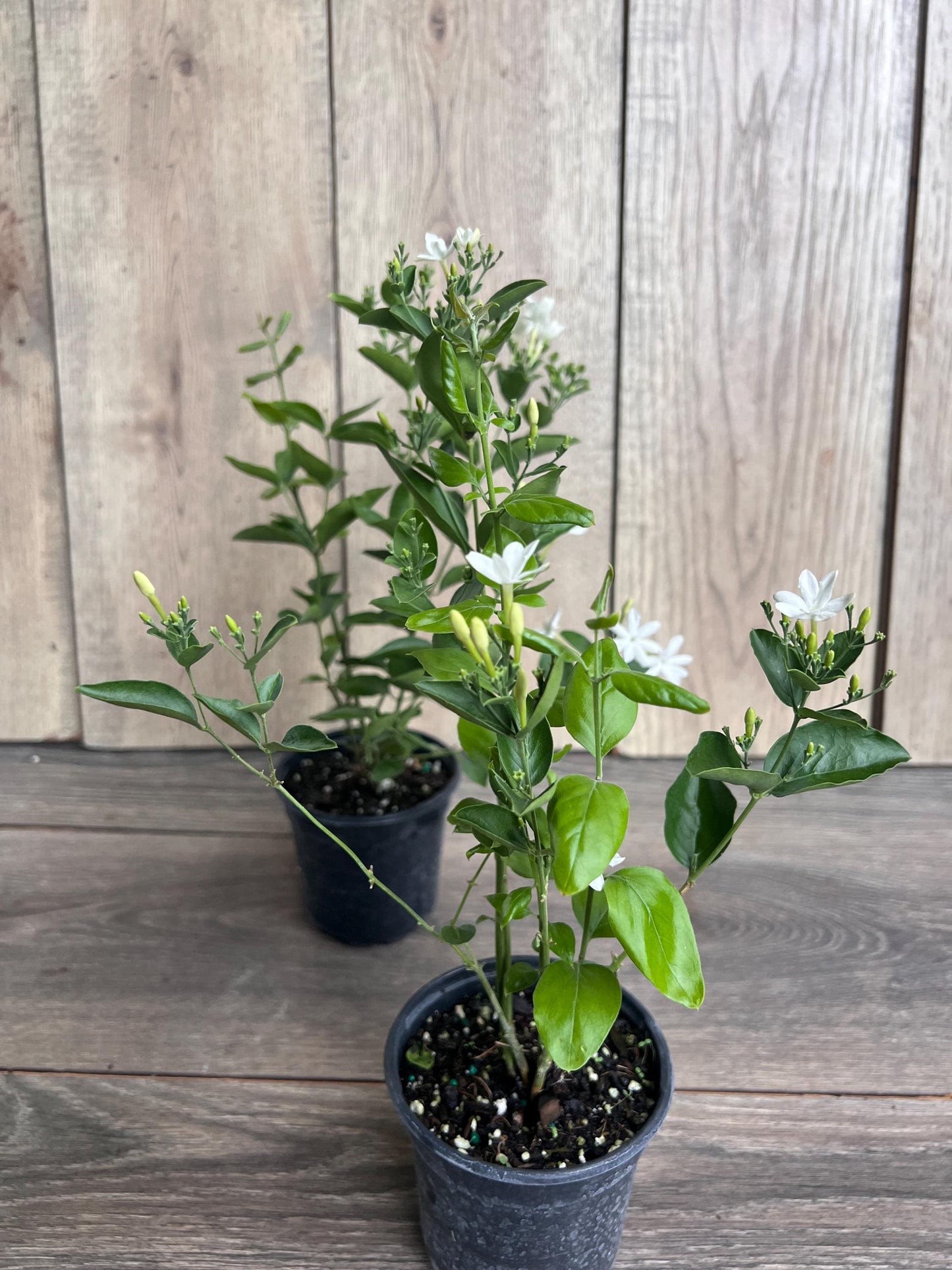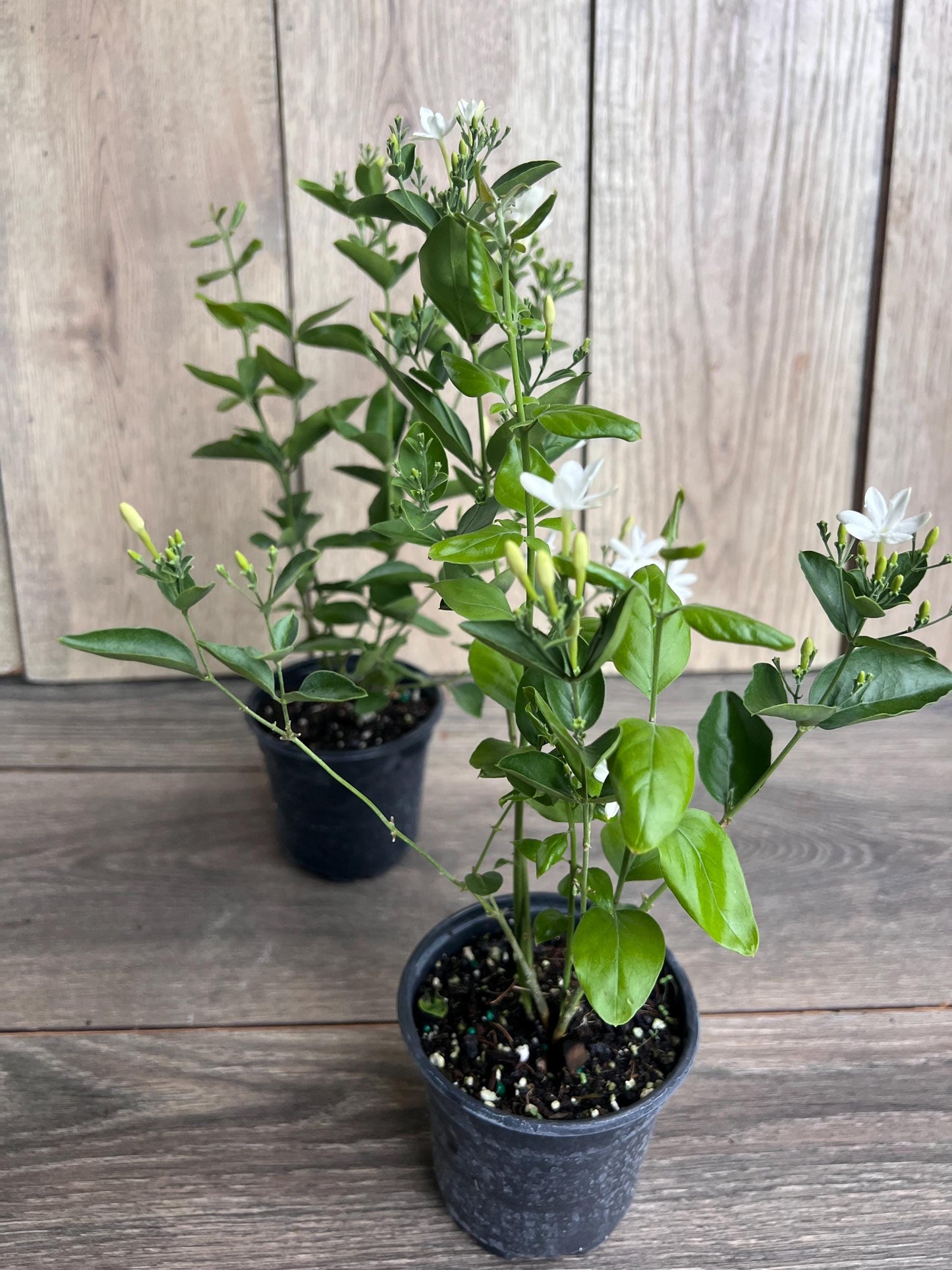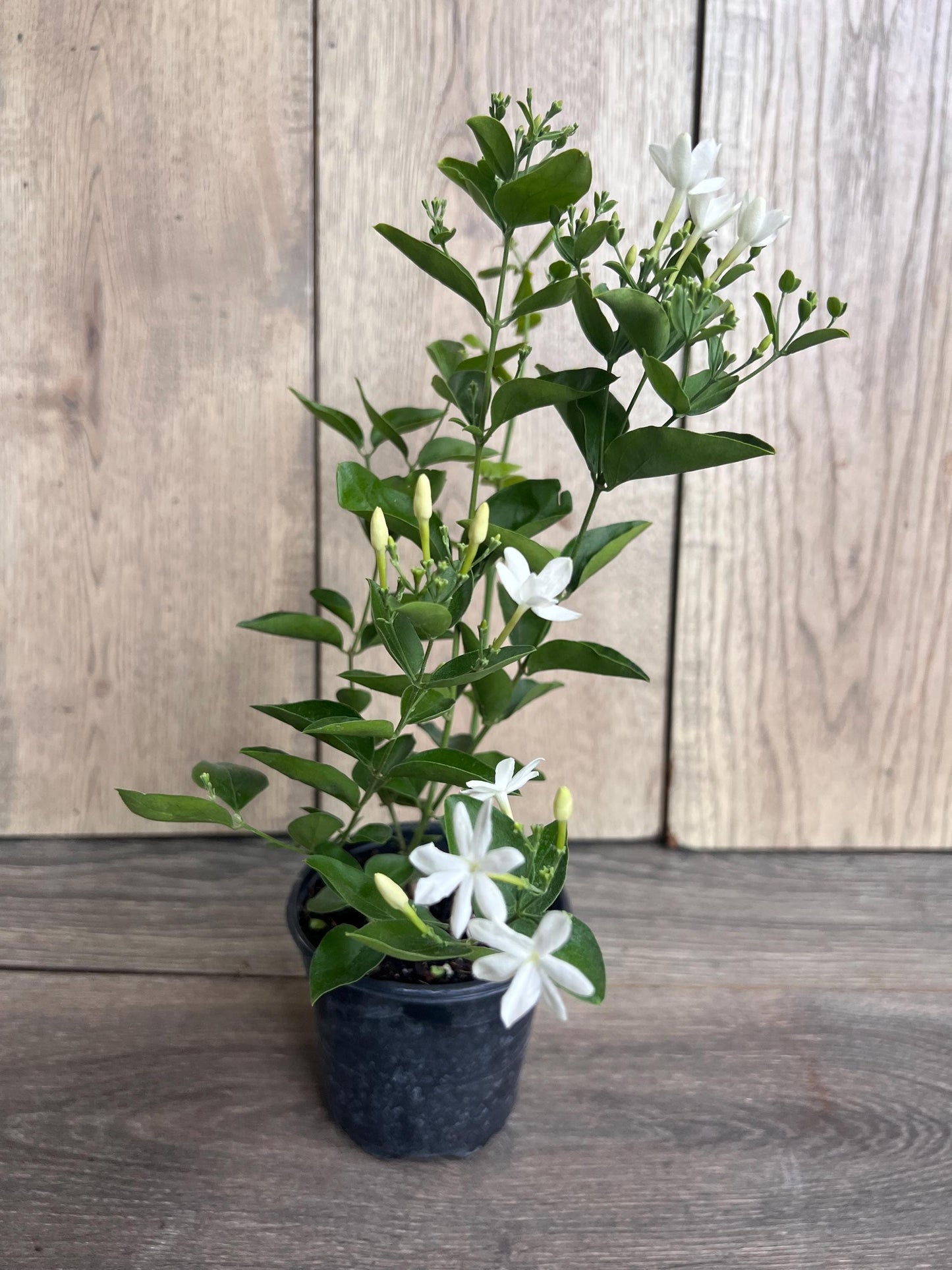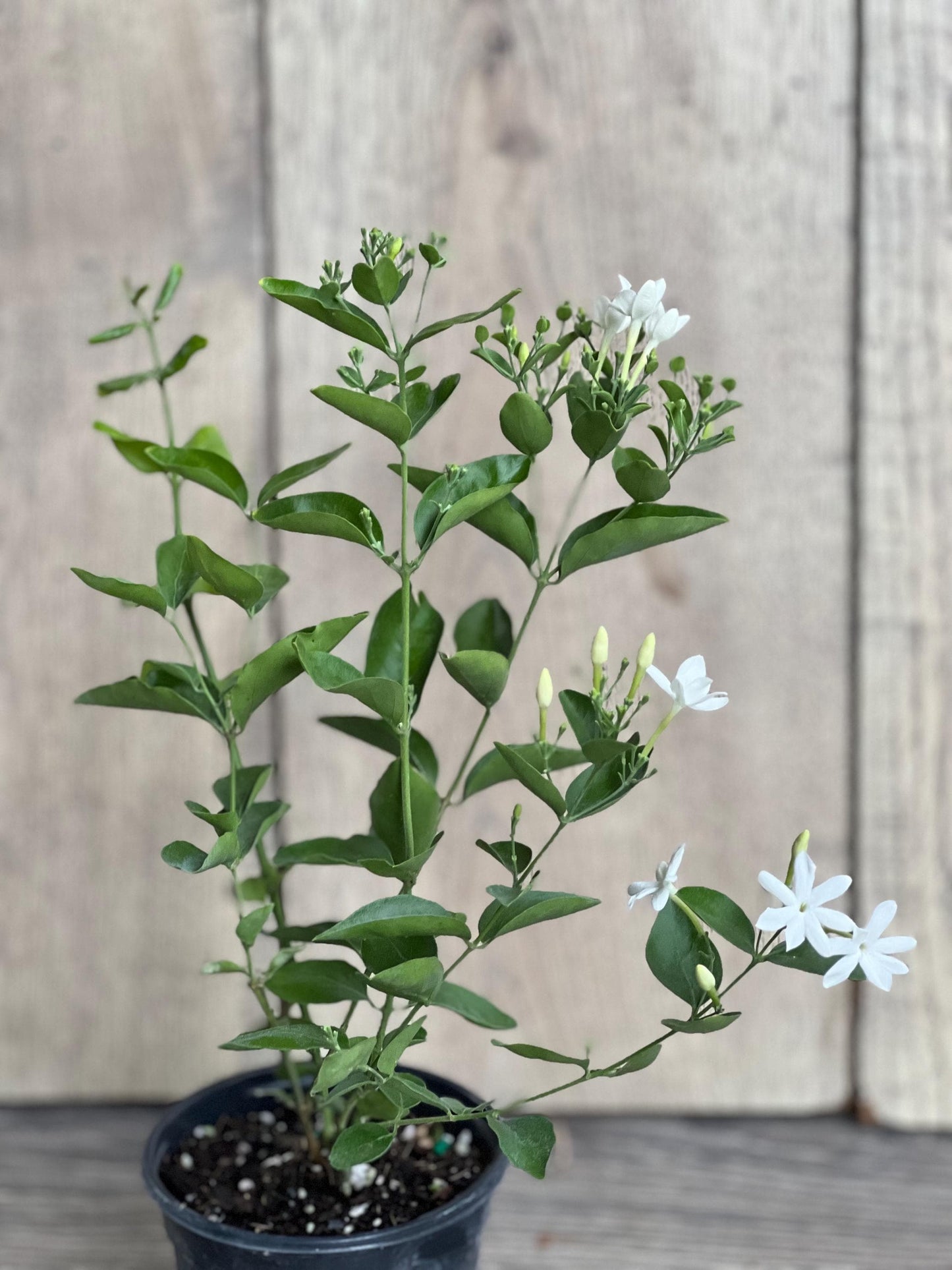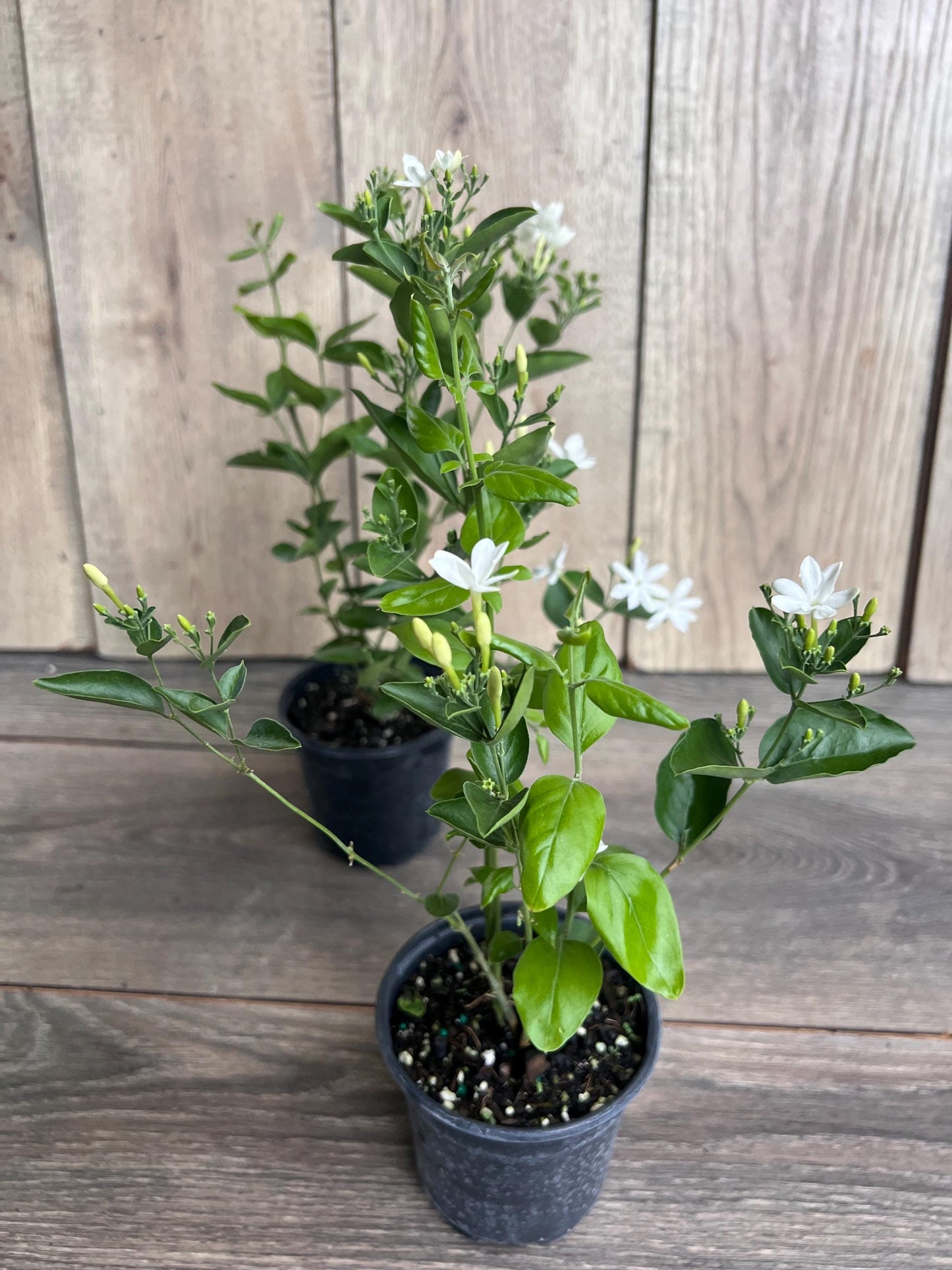Jasmine Molle , jasmine Indian Jui in 4", Jasminum molle
Jasmine Molle , jasmine Indian Jui in 4", Jasminum molle
Couldn't load pickup availability
Note: You will receive 1 Jasmine Molle in 4" Pot similar to the pictures
Jasmine Indian Jui (Jasminum sambac), also known as Indian Jasmine or Mogra, is a fragrant and widely cherished flowering plant native to Southeast Asia, particularly India. Known for its small, white, star-shaped flowers that release an intense, sweet fragrance, it is commonly used in traditional garlands, perfumes, and religious ceremonies. This plant grows as a shrub or vine, reaching up to 6-10 feet (1.8-3 meters) in height, and blooms abundantly from spring through fall. Indian Jui Jasmine thrives in full sun, well-draining soil, and warm temperatures, making it an ideal choice for gardens, balconies, and indoor spaces, especially appreciated for its evening fragrance.
Care Tips for Jasmine Indian Jui:
1. Light Requirements
- Full Sun: Thrives in full sun and needs at least 6-8 hours of direct sunlight daily to produce abundant blooms and its signature fragrance.
- Indoor Care: Place the plant near a south- or west-facing window to ensure ample sunlight. If light is insufficient indoors, supplement with a grow light.
2. Watering
- Moderate Watering: Keep the soil evenly moist, but avoid overwatering. Water when the top inch of soil feels dry. Ensure the soil drains well to prevent waterlogging, which can lead to root rot.
- Reduce Watering in Winter: In colder months, water less frequently and allow the soil to dry slightly between waterings.
3. Soil Requirements
- Well-Draining Soil: Prefers loamy, sandy soil that retains moisture without becoming soggy. Amending regular garden soil with compost or perlite can improve drainage.
- Slightly Acidic to Neutral pH: Best in soil with a pH between 6.0 and 7.5. Avoid overly alkaline or heavy clay soils that retain too much moisture.
4. Temperature and Humidity
- Warm Temperatures: Ideal temperatures range from 65°F to 85°F (18°C to 29°C). Protect from frost and temperatures below 50°F (10°C).
- Moderate to High Humidity: Prefers moderate to high humidity. Increase humidity indoors by using a humidifier, placing the plant on a humidity tray, or misting the leaves occasionally.
5. Fertilizing
- Feed During Growing Season: Fertilize every 4-6 weeks with a balanced, water-soluble fertilizer (preferably one high in phosphorus) during spring and summer to encourage blooming.
- Slow-Release Fertilizers: Use slow-release granular fertilizer in the spring for consistent feeding throughout the growing season.
- Reduce Fertilizing in Winter: During the dormant period (fall and winter), reduce or stop fertilizing as growth slows.
6. Pruning and Maintenance
- Prune After Flowering: Trim dead or damaged stems and shape the plant after flowering. Regular pruning encourages bushier growth and improves air circulation.
- Encourage More Blooms: Deadhead spent flowers to encourage continuous blooming. Prune any leggy vines to keep the plant compact.
- Support for Climbing: If grown as a vine, provide a trellis or support structure. Gently tie the vines to encourage upward growth.
7. Pests and Diseases
- Common Pests: Susceptible to pests like aphids, mealybugs, spider mites, and whiteflies. Check for pests regularly, especially under the leaves and along stems.
- Neem Oil or Insecticidal Soap: Use neem oil or insecticidal soap to treat pest infestations.
- Fungal Diseases: Prevent fungal infections like powdery mildew by avoiding overhead watering and ensuring good air circulation. Remove infected leaves promptly.
8. Flowering
- Fragrant White Flowers: Produces small, white, star-shaped flowers with a sweet fragrance, especially strong in the evening. Blooms from spring to fall.
- Encourage Flowering: Ensure the plant receives sufficient sunlight, is not overwatered, and is fed regularly during the growing season. Deadheading spent flowers can also encourage more blooms.
9. Repotting (For Container-Grown Plants)
- Repot Every 1-2 Years: Repot when the plant becomes root-bound or every 1-2 years. Choose a pot that’s 1-2 inches larger and ensure it has drainage holes.
- Fresh Soil: Use a fresh, well-draining potting mix when repotting to encourage healthy root growth.
10. Toxicity
- Non-Toxic to Pets: Jasmine Indian Jui is non-toxic to pets like cats and dogs, making it safe to grow in homes with animals.
Share
